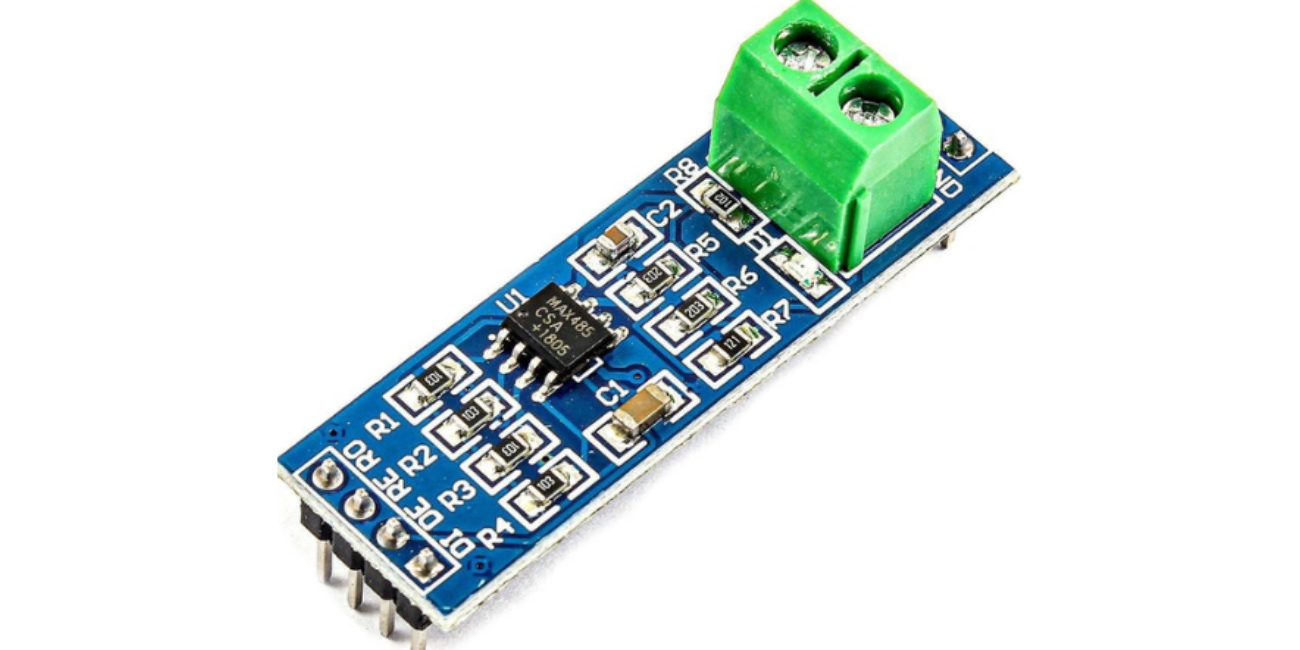Going the Distance: Unlocking Robust Communication with the MAX485 TTL To RS485 Converter Module
Ever found yourself scratching your head, wondering how to send data reliably over a long distance in your project? Maybe your standard serial (TTL UART) connections work perfectly fine when your microcontroller is right next to a sensor, but as soon as you try to stretch that cable beyond a meter or two, things get... flaky. Data drops, errors creep in, and your clever system starts acting anything but clever.
This is a common headache for makers and engineers alike, and it's precisely where the robust MAX485 TTL To RS485 Converter Module steps in as your unsung hero. This compact board isn't just a simple adapter; it's your gateway to reliable, long-distance serial communication in environments that would make standard TTL serial crumble. If you're building systems that need to talk across rooms, through noisy factory floors, or connect multiple devices on a single bus, understanding and utilizing an RS485 module like this is a game-changer.
Why Your TTL Serial Hits the Wall (and How RS485 Solves It)
Let's quickly touch on why your everyday TTL serial (the kind you use with Arduino or ESP boards) struggles with distance:
- Single-Ended Signals: TTL uses a single wire for data, referenced to ground. Any electrical noise picked up along that wire gets directly added to your data signal. Over distance, noise accumulates, corrupting your precious bits.
- Limited Drive Strength: The voltage levels drop quickly over longer cables, leading to weakened signals and unreliable reception.
- Point-to-Point Only: Typically, it's just one device talking to another. You can't easily connect multiple devices to the same communication line.
This is where RS485 swoops in with a much more resilient approach. It's a standard specifically designed for industrial communication and reliable data transmission over significant distances (up to 1200 meters or nearly 4000 feet!). The MAX485 TTL To RS485 module leverages this standard's core strengths:
- Differential Signaling: Instead of one wire, RS485 uses two wires for each data line (usually labeled A and B or + and -). Data is transmitted as the difference in voltage between these two wires. Any noise picked up affects both wires equally, and since the receiver looks only at the difference, the noise effectively cancels out. This provides incredible noise immunity.
- Multi-Drop Network: Unlike simple point-to-point connections, RS485 allows you to connect multiple devices (up to 32 or more, depending on the transceiver) to a single pair of wires. This creates a powerful multi-drop network, perfect for systems like Modbus where a master device communicates with many slaves.
The MAX485 chip itself is the workhorse RS485 transceiver on the module. It cleverly converts your microcontroller's TTL-level serial signals into the robust differential signals needed for RS485, and vice-versa.
Key Features and Benefits of the MAX485 TTL To RS485 Converter Module
When you grab one of these little modules, you're getting a lot of power in a tiny package:
- Exceptional Range: We're talking hundreds of meters. This isn't just for factory floors; think about smart homes, remote sensors in your garden, or controlling devices spread across a large building. This is where long-distance serial communication truly shines.
- Bulletproof Noise Immunity: Because of that differential signaling, your data is far less susceptible to electromagnetic interference from motors, power lines, or other noisy equipment. This makes it ideal for integrating into challenging embedded systems environments.
- Network Multiple Devices: Want to talk to 10 temperature sensors or 5 relay modules from a single Arduino RS485 port? No problem! The MAX485 module facilitates this multi-drop capability, simplifying wiring and reducing the number of ports needed on your microcontroller.
- Simple TTL Interface: Despite its industrial strength, the module presents a familiar TTL serial interface (RX, TX, VCC, GND) to your microcontroller. There are usually also two control pins (DE for Driver Enable, RE for Receiver Enable) that you'll manage from your code to switch between transmitting and receiving. This makes TTL to RS485 conversion remarkably straightforward.
- Cost-Effective: For the incredible capabilities it offers, these RS485 modules are surprisingly affordable, making advanced communication accessible to everyone.
Where Does the MAX485 Module Truly Shine? Inspiring Applications
The MAX485 TTL To RS485 module opens up a world of possibilities for your projects:
- Industrial Automation: This is its natural habitat. Connecting PLCs, sensors, actuators, and HMIs over long distances in factories, often using the Modbus RTU protocol.
- Smart Home & Building Automation: Imagine controlling lights, HVAC, or security sensors throughout a large house or multi-story building from a central hub.
- Remote Data Acquisition: Deploy sensors far from your main controller (e.g., weather stations, soil monitors in a large field) and reliably transmit data back.
- Distributed Control Systems: Creating networks of microcontrollers where each node can send and receive data from a central master.
- Custom Communication Backbones: If you need a robust, reliable backbone for custom communication between various devices over any significant distance, RS485 is your go-to.
Getting Started: A Few Pointers for Your MAX485 Module
- Enable Pins (DE/RE): This is the trickiest part for beginners. To transmit, you need to set DE (Driver Enable) HIGH and RE (Receiver Enable) LOW. To receive, set DE LOW and RE HIGH. You'll toggle these pins in your microcontroller's code right before and after sending/receiving data. Many modules link DE and RE together, so you only control one pin.
- Termination Resistors: For reliable communication over longer distances or with many devices, you'll need 120-ohm "termination resistors" at both ends of your RS485 bus. This prevents signal reflections.
- Biasing Resistors: Sometimes, especially in multi-drop networks, you might need "biasing resistors" (pull-up/pull-down) to ensure the bus is in a defined idle state when no device is transmitting.
- Common Ground: Always, always ensure all devices on the RS485 bus share a common ground connection. This is fundamental for differential signaling to work correctly.
- Wiring: Use a twisted pair cable (like CAT5/CAT6) for the A and B lines. This helps maintain the differential signal integrity and enhances noise immunity.
Conclusion: Your Project's Long-Distance Listener and Talker
The MAX485 TTL To RS485 Converter Module is an essential tool for any maker or engineer who needs to move beyond the limitations of short-range serial communication. It transforms your microcontroller's basic serial port into a robust, industrial-strength interface capable of reliable data transmission over vast distances and across multiple devices. By understanding its power and following a few simple setup rules, you'll open up a whole new realm of possibilities for your embedded systems and automation projects. No more flaky connections – just solid, dependable communication.

